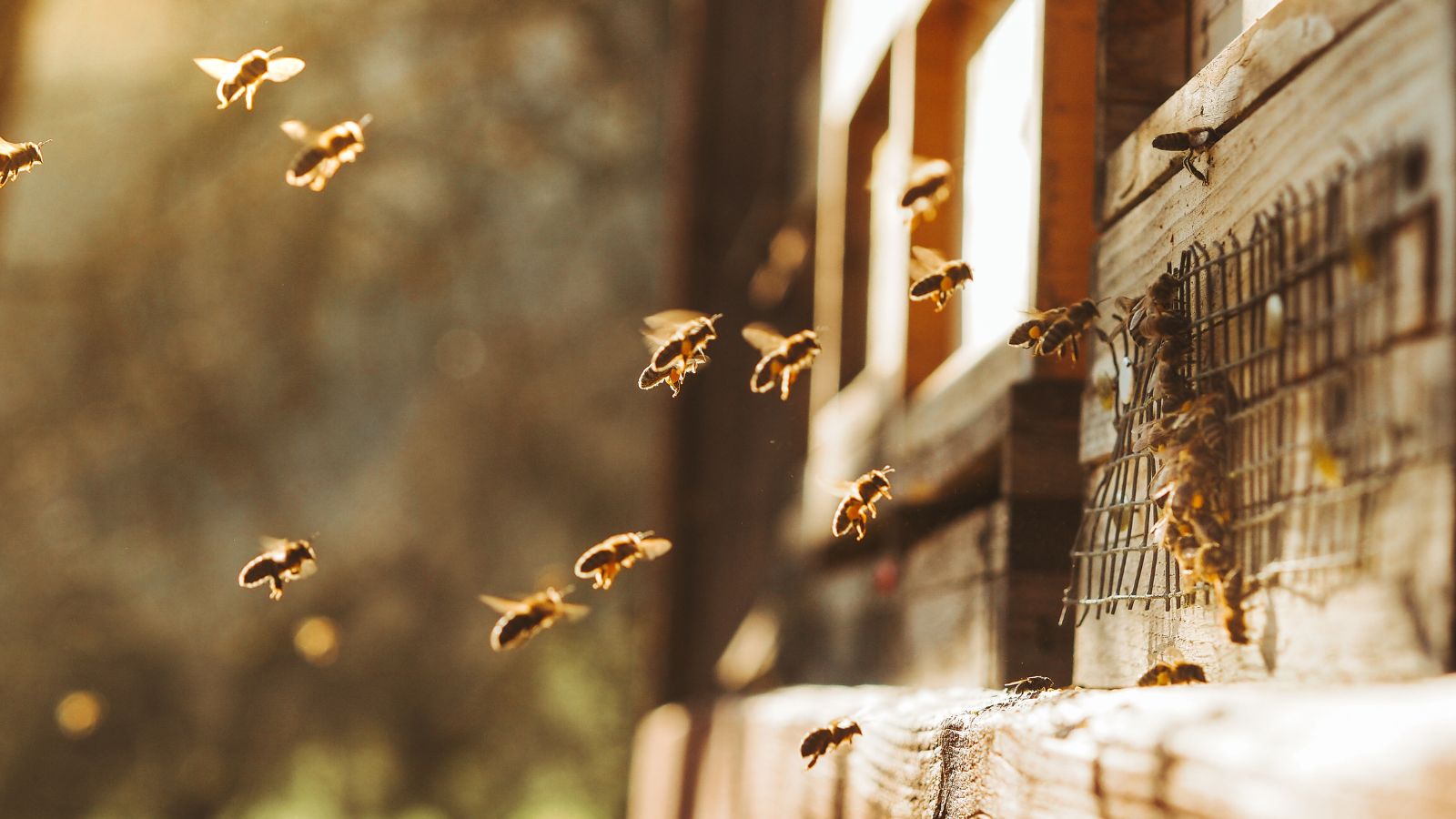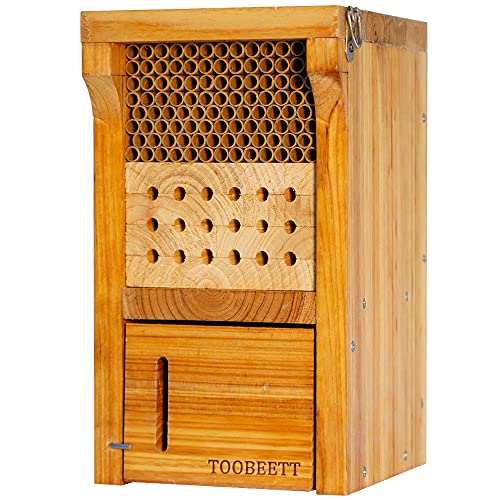How to safely remove bees from your home - humane tips to relocate a bees nest
These protected pollinators can be a threat to home and health if they make their hive in your walls. We look at ways to rehome them without harming the colony


While working in my yard one after I became aware of a very loud buzzing sound. Looking across the fences, I saw my bee-keeping neighbor’s honey makers were swarming over their hive.
I was awed by the intensity of the sound and the activity, but still happy to be observing from a safe distance considering the many thousands of bees that swirled in the sky.
But sometimes colonies of bees can make themselves comfortable a little too close to home, building nests in quiet lofts or in wall cavities. Given their value as pollinators though, the decision over whether and how to remove them is a complex one.
We look at what to do if you suspect you have bees in your property, and get expert advice on how to remove or rehome them.
What type of bees might be found in the house?
'A honey bee colony is made up of 10,000 to 30,000 bees, most of which are female, with one queen and a few thousand seasonal male drones,’ says Juliana Rangel PhD, an associate professor of apiculture and honey bee scientist.
‘They are cavity nesters residing in man-made hives, tree cavities, and other crevices. This includes spaces in the home such as between walls, stairways, or any other compartment with an opening to the outside and a capacity of at least 20-40 liters.
'Most colonies will move into homes or buildings during the reproductive (or swarming) season, generally in the spring and summer. The telling sign is seeing dozens of bees going in and out of the walls during the day, which is the forager bees looking for floral nectar and pollen. If the colony is large, you may even hear some buzzing through the walls.
‘Most of the native bees you’ll find in buildings are carpenter bees. These can be a nuisance because the females dig round holes in wood, such as beams, to lay their eggs. Carpenter bees look like bumblebees in that they are large and black. But, unlike their fuzzy mimics, carpenter bees are generally slick with few hairs and shiny bodies (which are generally black or dark in color).’
Bumblebees are typically larger and rounder than honey bees. They gather nectar and pollen from flowers for food, but don’t have the same wax-producing glands as honey bees, so can’t make the honeycomb cells used for storing honey. They tend to live in small nests hidden in the ground or some other well-protected area.
Should you remove a colony?
‘Many native bee species are endangered, so, if you are able to cohabit with them, it may be a good idea to let them complete their life cycle and they can move on to another location and continue their important role as pollinators,’ says Juliana.
‘A family could live in harmony with a bees nest still in place if it’s in a location where they don’t pose a direct threat to daily activities,’ Shannon Harlow Ellis, an associate certified entomologist. ‘They might need to avoid the area to not disturb the bees. Implementing a pollinator protection plan can also help manage the situation safely.
‘This approach would change significantly if a family member had a life-threatening allergy to bees, and immediate removal of the nest would be necessary to prevent the risk of stings. A professional pest control or a beekeeper should be contacted to safely relocate the nest. Additionally, the allergic family member should always carry an epinephrine auto-injector and try to avoid exposure to bees.’
Design expertise in your inbox – from inspiring decorating ideas and beautiful celebrity homes to practical gardening advice and shopping round-ups.
What risks are there to the house?
‘If honey bees have turned a wall void into a hive, it could lead to several issues,’ adds Shannon.
‘Over time it could damage the wall structure due to the weight and the honey seeping into the materials. The presence of the honey and wax could attract other pests, such as ants or rodents.
‘There could be an increased risk of stings if the bees feel threatened or they start to enter the living spaces through small gaps or vents.
‘And If the hive is not maintained or if bees die within the walls, it could lead to unpleasant odors.’
How to remove them
Honey bees pollinate 80 per cent of flowering plants in the US and need to be protected wherever possible, so it is always advisable to call in a professional to deal with them.
‘Depending on where you live, there may be laws or regulations with regards to how honey bee colonies can be safely removed,’ advizes Julianna. ‘Some places may stipulate only beekeepers with appropriate removal permits can do “live” removals of the bees.
‘If this is the case, they have to destroy the walls to reach the area where the developing bees and the queen are located. The remover may cut out all the combs and use specialized vacuums to get the bees out of the crevice without killing them. The remover will then relocate the collected combs and bees into a man-made hive.
‘Using pesticides isn’t the preferred way to get rid of colonies in buildings, but it may be the only way if they are hard to reach or too aggressive to manage safely. Most locations require that the person performing this type of removal hold a pesticide application permit.'
For a carpenter bee infestation, experts recommend a powder pesticide dusted into the hole they’re bored. Always wear protective clothing when doing this to avoid stings. Don’t seal up the hole immediately though – leave it open for the bees to continue using it and track the pesticide inside. Seal it up in fall, a few days after the final application.
Keep these pollinators in the yard by creating their very own bee hotel. Read our guide on the best place to position your air bee and bee.

Alison is a contributing gardens writer for Homes & Gardens, writing on a range of topics from plant care to garden design. She has recently landscaped the outside space of her Victorian home, replacing crazy paving and cracked slabs with new lawn, and is currently cultivating a fruit bed.


